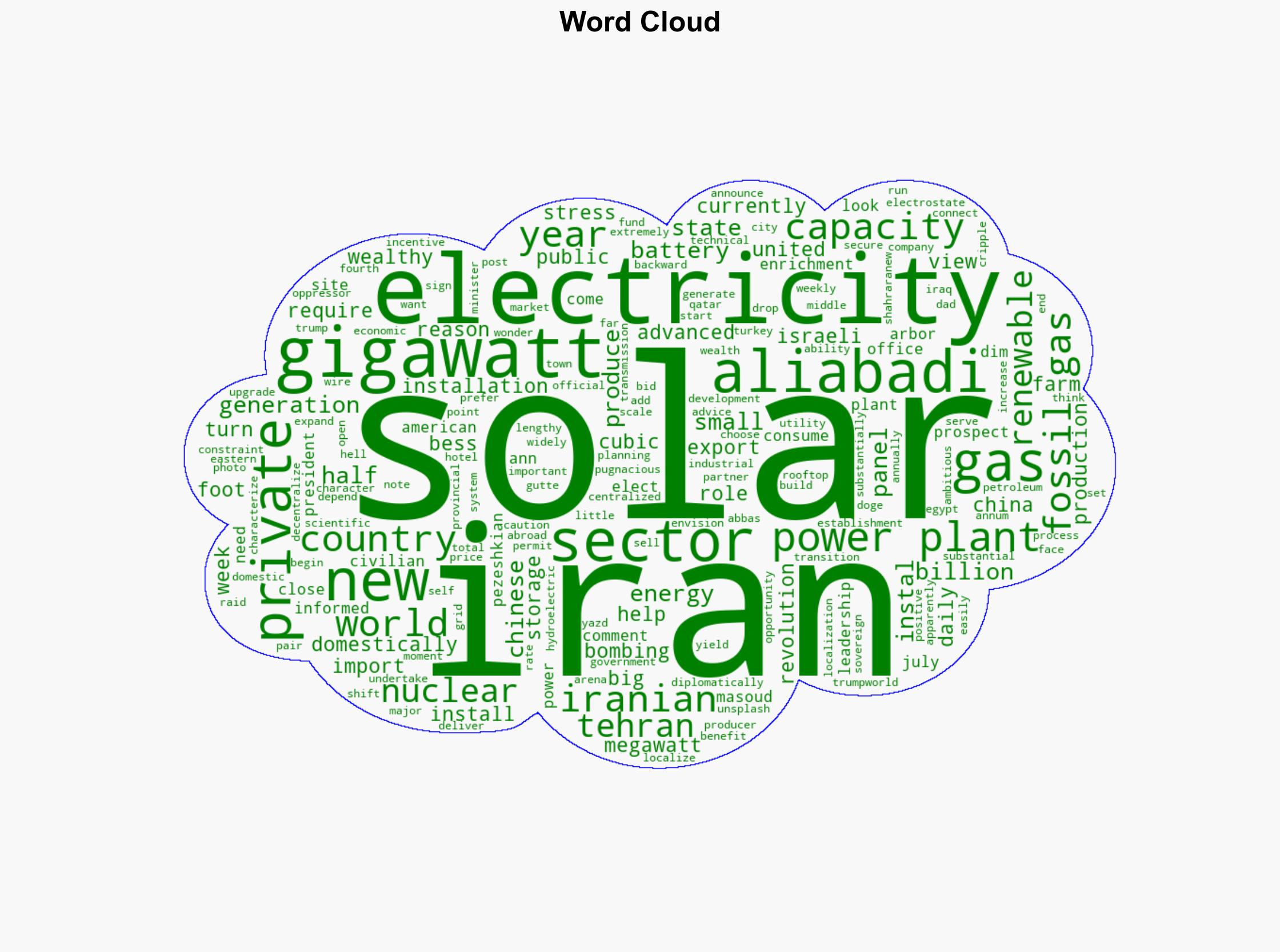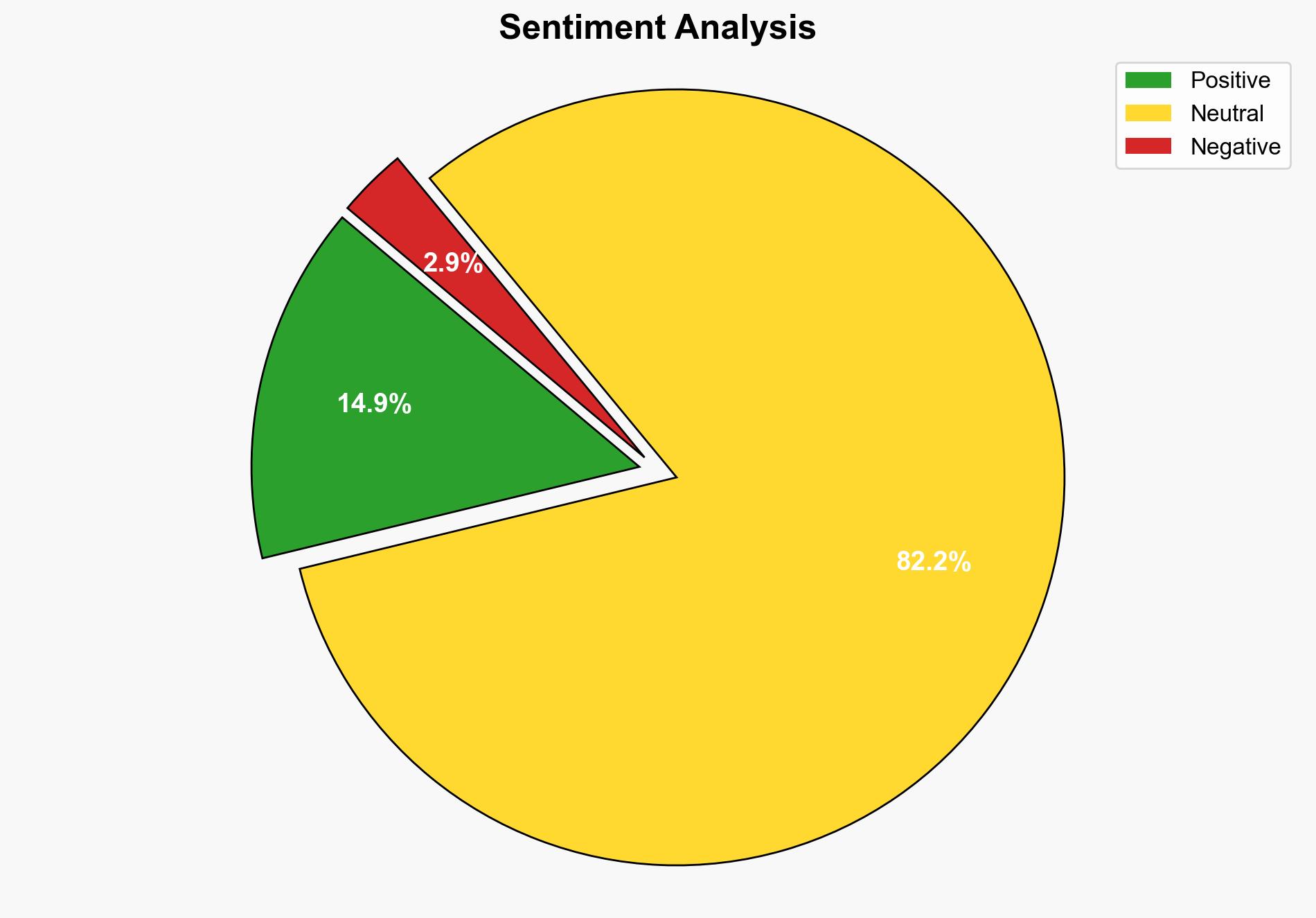Iranian Energy Minister Seeks Chinas help to Install 7 gigs of new Solar Capacity this Year – Juancole.com
Published on: 2025-09-13
Intelligence Report: Iranian Energy Minister Seeks China’s Help to Install 7 Gigs of New Solar Capacity this Year
1. BLUF (Bottom Line Up Front)
Iran’s strategic pivot towards renewable energy, specifically solar power, with China’s assistance, is driven by both economic constraints and geopolitical pressures. The most supported hypothesis suggests this move is primarily motivated by a need to reduce domestic fossil fuel consumption to increase export capacity. Confidence Level: Moderate. Recommended action includes monitoring Iran’s renewable energy developments and assessing the geopolitical implications of increased Iran-China cooperation.
2. Competing Hypotheses
Hypothesis 1: Iran’s push for solar energy is primarily driven by economic motives to free up fossil fuels for export, thereby increasing national revenue.
Hypothesis 2: The shift towards solar energy is a strategic response to geopolitical isolation and the need to secure energy infrastructure against potential military threats.
3. Key Assumptions and Red Flags
Assumptions:
– Iran has the technical capability to integrate new solar capacity into its existing grid.
– China is willing and able to provide the necessary technology and support without significant delays.
Red Flags:
– Potential overestimation of Iran’s ability to scale solar capacity rapidly.
– Dependence on Chinese technology may expose Iran to geopolitical leverage by China.
– Lack of detailed information on the financial terms of Iran-China cooperation.
4. Implications and Strategic Risks
– Economic: Successful implementation could enhance Iran’s economic resilience by increasing fossil fuel exports.
– Geopolitical: Strengthened Iran-China ties may alter regional power dynamics, potentially escalating tensions with Western nations.
– Cybersecurity: Increased reliance on Chinese technology could introduce vulnerabilities in Iran’s energy infrastructure.
– Psychological: The initiative may bolster domestic support for the regime by portraying technological advancement and self-sufficiency.
5. Recommendations and Outlook
- Monitor the progress of Iran’s solar projects and China’s involvement to assess the impact on regional energy markets.
- Evaluate potential cybersecurity risks associated with Chinese technology integration into Iran’s energy infrastructure.
- Scenario Projections:
- Best Case: Iran successfully increases solar capacity, boosting economic stability and reducing geopolitical tensions.
- Worst Case: Technical and geopolitical challenges stall solar projects, exacerbating economic and political instability.
- Most Likely: Incremental progress with moderate economic benefits and increased Iran-China cooperation.
6. Key Individuals and Entities
– Masoud Pezeshkian
– Abbas Aliabadi
7. Thematic Tags
national security threats, renewable energy, Iran-China relations, geopolitical strategy




